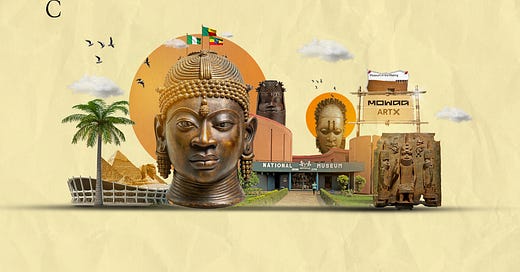Communiqué 53: When the artifacts come home to roost
Stolen African artifacts are returning to the continent en masse. This creates new massive opportunities for the creative economy. But how will African countries handle them?
1. A tale of two museums
Every November, Lagos transforms itself from Nigeria’s commercial capital to its cultural capital. The hustle and bustle of the financial district give way to art exhibitions and cultural festivals, from Art X to the African International Film Festival. But last year, things were a bit different. While the festivities were happening in Lagos, the ancient city of Benin hosted one of the most significant events in Nigeria’s arts and culture.
The Museum of West African Art (MOWAA) was previewing its purpose-built building. The two-day event, titled Museum in the Making, featured the building’s hard hat opening, creative workshops, panels, and social gatherings. Marking the start of the museum's first annual programming season, it led up to MOWAA’s inaugural exhibition, which will be held later this year.
Thousands of miles away in Egypt, the Grand Egyptian Museum had opened the doors of some of its galleries for a trial run of 4,000 visitors. The museum, near the Pyramids of Giza, will showcase more than 100,000 Egyptian artifacts, including treasures from the tomb of King Tutankhamun. The billion-dollar museum, initially scheduled to open in 2012, had suffered repeated delays due to political turmoil, cost overruns, and the COVID-19 pandemic, but was now finally preparing for its opening.
Both museums had something in common; at their inaugurations, they showcased expansive collections of traditional African art, a significant part of which had been repatriated to the continent in recent years. But their openings also marked a new chapter in a decades-long movement.
Keep reading with a 7-day free trial
Subscribe to Communiqué to keep reading this post and get 7 days of free access to the full post archives.





